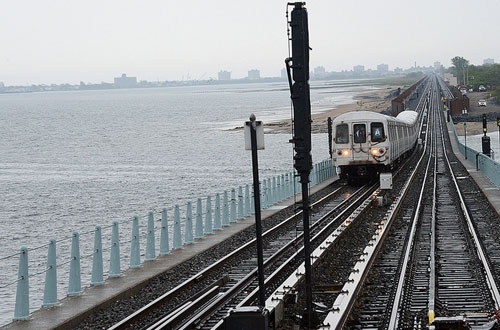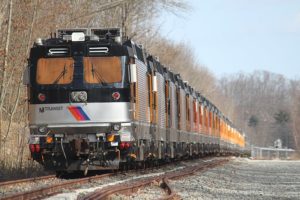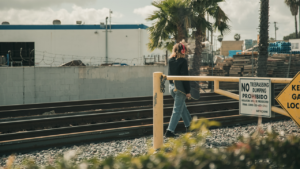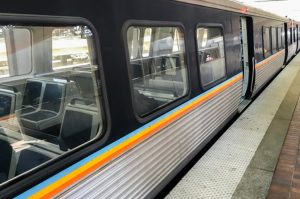SEPTA, MTA receive federal funds for storm resiliency
Written by Jenifer Nunez, assistant editor
Southeastern Pennsylvania Transportation Authority (SEPTA) and the New York Metropolitan Transportation Authority (MTA) have been awarded nearly $2 billion in storm resiliency funding from the Federal Transit Administration (FTA). All of the grants are part of the FTA Emergency Relief Program & Disaster Relief Appropriations.
SEPTA will receive more than $86 million in total FTA funds. More than $32 million will be used for its Railroad Signal Power Reinforcement Project that will replace non-insulated power cables along its railways. The agency will use an additional $18.7 million for the Railroad Embankment and Slope Stabilization Project, which the funding will stabilize several passenger railroad embankments in the region.
Additional SEPTA grant projects include $9 million for its Ancillary Control Center Project; $4.5 million for its Manayunk/Norristown Line Shoreline Stabilization Project and $3.7 million for its Subway Pump Room Emergency Power Project,
“SEPTA would like to thank the Southeastern Pennsylvania Congressional Delegation for their work to highlight the critical needs that will be addressed with this funding,” said SEPTA General Manager Joseph Casey. “This advocacy from our local elected officials was key in gaining the FTA’s support.”
The state of New York expects to receive $1.9 billion in funding from the FTA. Of the funding, approximately $1.6 billion supports projects managed by the MTA and, as announced last week, approximately $212 million supports projects managed by the Port Authority of New York and New Jersey (PANYNJ). The New York City Department of Transportation is also expected to receive approximately $200 million.
“Adjusting to the new reality of extreme weather is a collaborative effort and the more than $1.9 billion awarded today by the federal government will help us build a stronger and more resilient New York,” New York Gov. Andrew Cuomo said. “Superstorm Sandy taught us the importance of preparing for the worst and the need to reimagine our state to meet the challenges of a changing climate. Over the past few years, we’ve focused on everything from storm-proofing homes and electrical stations to protecting subway entrances and other vital infrastructure from the effects of major flooding. This funding will ensure that our state has the resources it needs to continue building back stronger and better than ever before.”
MTA Chairman and Chief Executive Officer Thomas Prendergast said, “With each passing day, the MTA puts Superstorm Sandy further behind us as we restore service and repair our infrastructure. But we also know that similar events are ahead, so we are building back better, making our transportation network stronger, more resistant to major storms and thus more resilient. This is a new way of thinking at the MTA and one which must become a permanent feature of how we plan the future of the transportation system that is the backbone of our regional and state economy.”
The MTA Mitigation of Flooding in Rail Yards project will benefit from $617 million; Protection of Street-Level Openings project will see $301 million; Rockaway Line Storm Protections will use $137 million; River to River Rail Resiliency for Long Island Rail Road and Amtrak project will benefit from $81 million; $75 million will be used for emergency communications enhancements; the Long Island City Yard Resiliency project will use $19 million and the agency’s Protection of Tunnel Portals and Internal Tunnel Sealing project will use $43 million.
Other MTA projects supported by the funding include Hardening of Substations ($112 million); Right-of-Way Equipment Hardening ($64 million); Internal Station Hardening ($20 million); Flood Resiliency for Critical Bus Depots ($45 million); Metro North Power and Signals Resiliency ($38 million); Flood Resiliency for New York City Transit Critical Support Facilities ($24 million).





